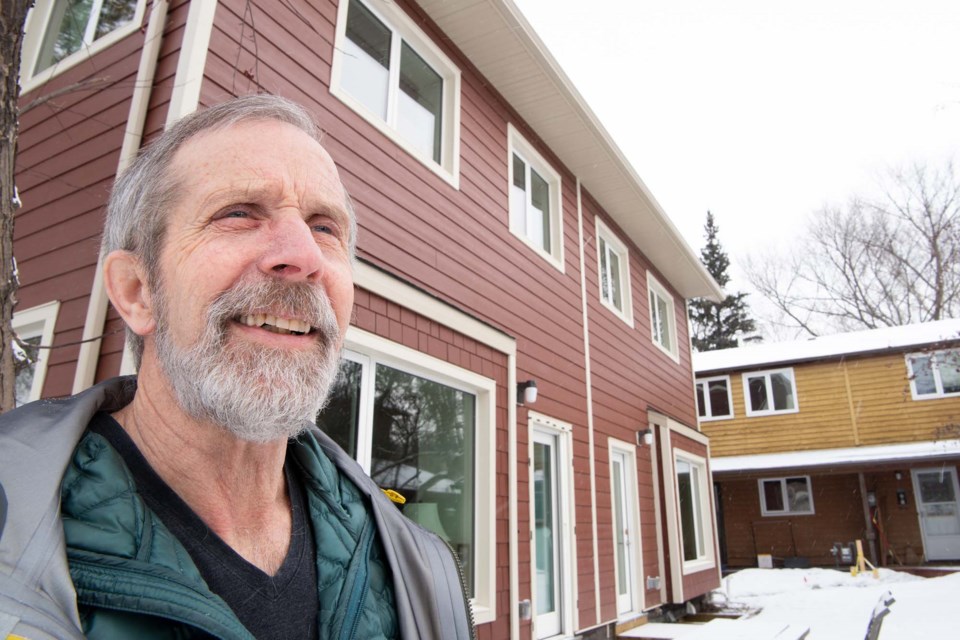Alberta homebuilders need more carbon-cutting tools in their toolbox if the province is to meet the challenge of climate change, says a St. Albert green building advocate.
About 200 construction, design, and energy efficiency experts are expected to meet online and in person April 6-7 for the 2022 Alberta Energy Efficiency and Innovation Summit.
The conference aims to bring industry experts together to figure out how to get Alberta’s buildings to net-zero carbon emissions by 2050 as per Canada’s climate change targets, said St. Albert’s Tanya Doran, the western Canada carbon lead with Stantec Consulting and founding chair of the Smart Sustainable Resilient Infrastructure Association (which co-hosts the summit).
Buildings account for about 17 per cent of Canada’s carbon footprint, reports the federal government. A net-zero home effectively produces zero carbon emissions and costs 30 to 55 per cent less to operate.
“Eighty per cent of the buildings that are going to be here in 2050 are already here,” Doran said, and we need to figure out how to make them carbon-neutral.
Doran said there is a sense of urgency in the building industry to meet this carbon target, as the impacts of climate change are becoming obvious — heat-related deaths in B.C. vastly outnumbered COVID-19 deaths there during last summer’s heat-dome event, for example.
“The impacts of climate change are real, and they are real to us today.”
Building solutions
Doran said next week’s conference will focus on green energy, new technologies, and other elements of energy efficiency.
“Efficiency is the cheapest form of energy we have,” Doran said, with a 2015 Dunsky Energy Consulting report finding it to be three to six times cheaper than building new power supplies.
Doran said recent spikes in energy prices have sparked new interest in energy efficiency, which research suggests could help Canada meet 40 per cent of its energy needs.
Most home retrofits can cut energy bills by maybe 20 per cent, said Brendan Haley, a speaker at the conference with Efficiency Canada. Deep-energy retrofits can up this to 80 per cent, but tend to be rare due to their high cost and the need to rip open walls to install new insulation.
One solution is “out-sulation,” which is where you leave a home’s walls intact and bolt prebuilt insulated panels to the outside, Haley said. This technique, popularized by the Energiesprong program in the Netherlands and now being rolled out by architect Peter Amerongen in Edmonton, lets homeowners retrofit their homes for significantly less time and hassle and potentially less money.
The conference will also discuss financial solutions for retrofits, which often have high up-front costs. One option is the Clean Energy Improvement Program, which lets owners pay for efficiency upgrades over time through their taxes. Doran said she is excited to see this program coming to St. Albert, and hopes to use it to get new windows and green power for her house.
Doran said she will speak at the conference on new skills employees will need to have to meet tomorrow’s green energy needs, particularly energy modelling and awareness.
“Buildings are more than energy,” she said, and designers also must consider indoor air quality, the carbon footprint of different materials, and walkability.
Haley said he will discuss policy options to advance deep energy retrofits during the conference. One option is for the federal government to support market development teams. Used by the Energiesprong program, these groups aggregate properties together to retrofit whole neighbourhoods at once, reducing costs through economies of scale.
Another is mandatory performance standards for buildings. Now used in much of Europe, Haley said these standards would give Albertans more knowledge of the energy costs of the buildings they buy and also reduce carbon emissions from energy use.
Tickets for the conference range from $125 to $250. Visit energyefficiencysummit.ca for details.




